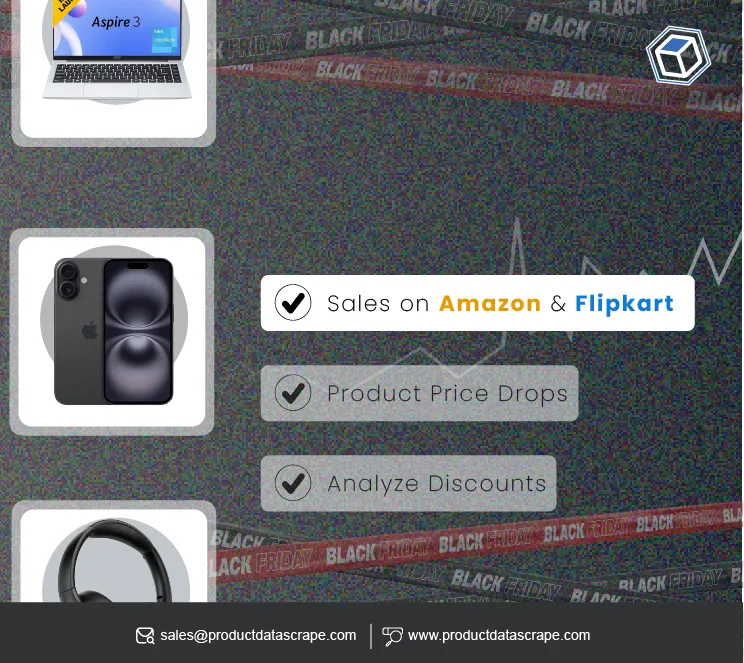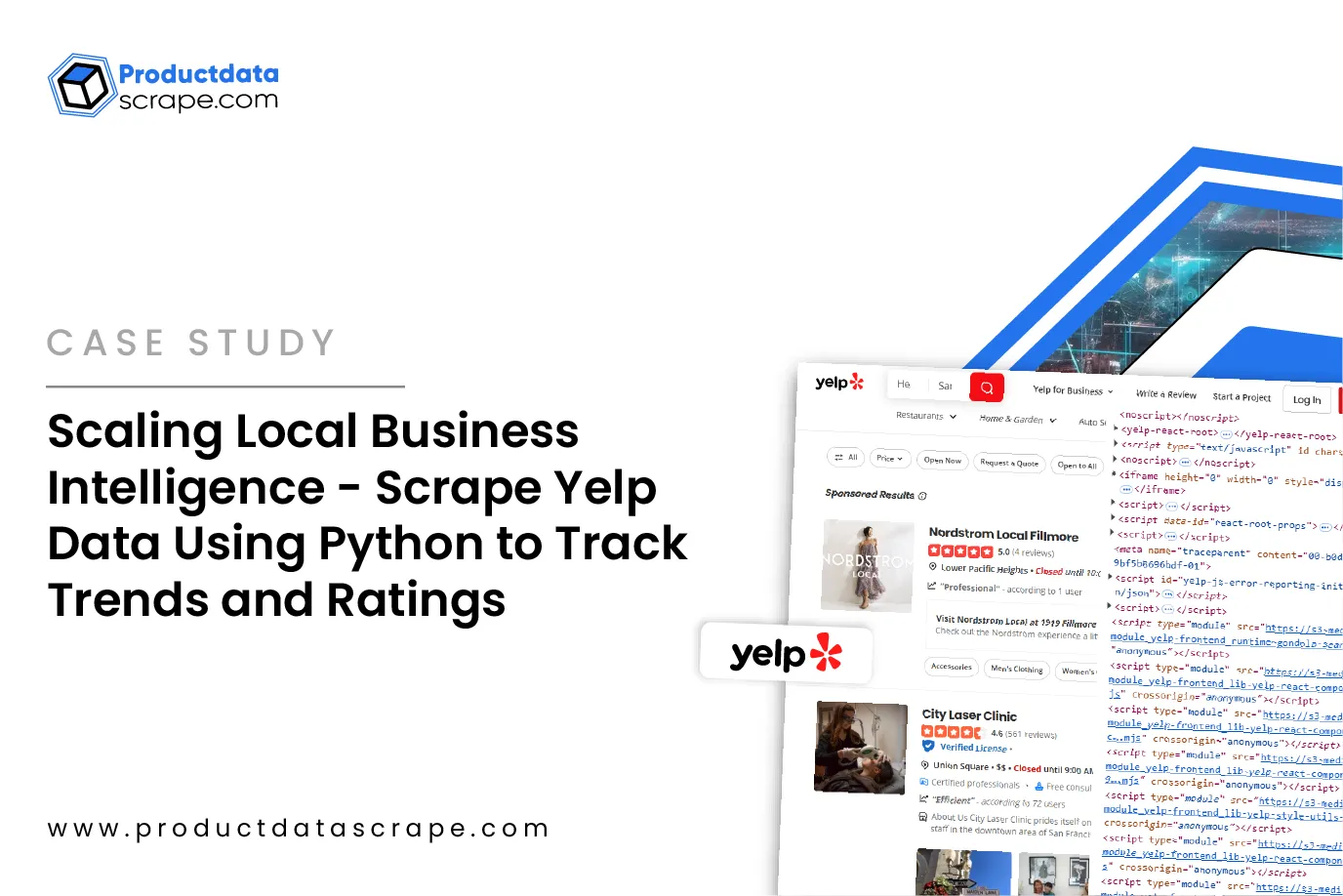
Introduction
In the high-speed world of retail and FMCG, Extract Rimi API For Grocery Prices Data offers a
strategic edge. As retailers and brands battle on price, promotions, and stock availability,
having a reliable, automated pipeline to grab competitor pricing is no longer nice-to-have —
it’s essential. Manual price checks across regions or stores are slow, error-prone, and quickly
fall behind. In contrast, a properly built API extraction framework helps analysts and pricing
teams scale: dozens or hundreds of SKUs, across multiple stores and locations, in real time.
Imagine slashing your pricing analysis time by 60% while improving accuracy and enabling timely
reactions to promotion changes. That’s what professional-grade scraping and API integration can
deliver. Whether you're a brand, retailer, or data service provider, this blog explores how to
Extract Rimi API For Grocery Prices Data efficiently — turning raw data into actionable
insights.
In the sections that follow, we’ll diagnose six common challenges (with stats and a year-by-year
table from 2020 to 2025), and show how your stack can overcome them. Then we’ll explain why
choose Product Data Scrape as your extraction partner. Finally, we’ll wrap with a call to action
you can adopt for lead gen or product adoption.
Data Latency, Timeliness & Competitive Responsiveness
In retail, speed is critical. Delays in competitor pricing intelligence can directly impact
margins and promotional effectiveness. By implementing a robust system to Extract Rimi API For
Grocery Prices Data, organizations can dramatically reduce the time between a competitor price
change and actionable insights. This provides pricing teams with a competitive edge, allowing
them to react in real-time rather than retroactively.
Delayed intelligence can lead to missed revenue opportunities. For example, if a competitor
launches a limited-time promotion on a high-demand SKU and your team only detects it hours
later, your pricing strategy could be misaligned, leading to lost margin or missed sales.
Adopting a framework for automated extraction helps eliminate these delays, enabling swift
tactical decisions such as dynamic repricing, targeted promotions, or inventory adjustments.
Illustrative 2020–2025 trend for time-to-detect competitor price changes:
| Year |
Avg Time-to-Detect (hrs) |
% Reduction vs 2020 |
| 2020 |
48 |
— |
| 2021 |
24 |
50% |
| 2022 |
12 |
75% |
| 2023 |
6 |
87.5% |
| 2024 |
3 |
93.8% |
| 2025 |
1 |
97.9% |
Adopting a Real-Time Rimi Grocery Price Monitoring API ensures updates occur promptly,
compressing time-to-action from days to hours or minutes. Additional business levers include
focusing on high-velocity SKUs, implementing delta detection to avoid redundant processing, and
coupling detection with automated alerts for rapid decision-making. Organizations employing
these methods report faster promotional responses, fewer manual errors, and improved gross
margins.
This approach also complements Rimi Data Scraping API for Competitor Insights, allowing
businesses to monitor not only pricing but promotional patterns across categories, which is
critical for strategic decision-making. By combining automated extraction with analytics and
alerts, teams achieve operational efficiency and gain a measurable advantage in competitive
markets. In practice, analysts can focus on interpreting insights and driving business outcomes
rather than spending hours collecting and cleaning data.
Ultimately, investing in high-frequency, automated extraction capabilities positions
organizations to respond to market changes swiftly, minimize lost margin, and optimize
promotional effectiveness. Leveraging the Extract Rimi API For Grocery Prices Data is central to
achieving these outcomes and supporting data-driven pricing strategies.
SKU Mapping, Catalog Consistency & Data Quality
Maintaining consistent SKU mapping is essential for accurate pricing insights. Retailers often
encounter challenges due to evolving product catalogs, renamed SKUs, multipacks, and regional
assortment variations. Manual reconciliation of mismatched SKUs consumes significant analyst
time and introduces errors, impacting both revenue and margin decisions. Leveraging automated
extraction enables organizations to Extract Rimi API For Grocery Prices Data and improve mapping
reliability.
Illustrative 2020–2025 trends in SKU mapping:
| Year |
% SKUs Requiring Manual Mapping |
Avg Manual Hours/1,000 SKUs/Week |
| 2020 |
28% |
20 |
| 2021 |
24% |
16 |
| 2022 |
20% |
12 |
| 2023 |
16% |
9 |
| 2024 |
12% |
6 |
| 2025 |
8% |
4 |
Automated SKU mapping reduces manual effort and ensures greater confidence in analytical
outputs. Strategies include multi-attribute matching using brand, UPC, pack size, and normalized
product titles. Fallback logic, where confidence is low, ensures only uncertain matches require
human review. Coupling extraction with Web Scraping Rimi Promotions & Discount Data helps
validate mappings by cross-checking promotional activity, ensuring the correct SKU is tracked
even during flash promotions.
The use of Extract FMCG Product Pricing Data from Rimi API allows businesses to integrate
pricing data into broader FMCG analysis pipelines, improving product assortment decisions and
promotional planning. Implementing a master catalog and reconciliation process ensures
historical data consistency and supports downstream analytics. Over time, these methods reduce
data discrepancies, shorten time-to-insight, and allow analysts to focus on strategy rather than
data cleanup.
In real-world scenarios, retailers tracking 10,000 SKUs reported a 71% reduction in manual
mapping workload after deploying automated matching and validation logic. This translated into
faster reporting cycles, improved pricing decisions, and higher ROI from competitive
intelligence initiatives.
Ensure accurate pricing and faster decisions—streamline SKU mapping and
maintain catalog consistency with our reliable data solutions today!
Contact Us Today!
Rate Limits, Blocking & Resilience
Scalable data extraction requires resilience against rate limits, IP blocking, and anti-bot
measures. Without robust infrastructure, extraction jobs can fail, introducing gaps in data
coverage and delays in pricing decisions. Businesses implementing extraction pipelines to
Extract Rimi API For Grocery Prices Data can maintain consistent monitoring while mitigating
operational risks.
Illustrative 2020–2025 resilience metrics:
| Year |
% Runs Impacted by Throttling |
Avg Downtime per Week (mins) |
| 2020 |
62% |
180 |
| 2021 |
52% |
120 |
| 2022 |
40% |
80 |
| 2023 |
30% |
50 |
| 2024 |
18% |
25 |
| 2025 |
10% |
10 |
Business strategies for resilience include respectful request patterns, exponential backoff with
jitter, distributed fetching across proxies, and automated failover monitoring. These approaches
reduce downtime and prevent costly extraction retries. Using tools such as Instant Data Scraper
enables rapid fallback mechanisms when primary extraction pipelines encounter failures, ensuring
continuity in high-value SKU monitoring.
Resilience directly affects business KPIs, including timely pricing updates, accurate
promotional tracking, and reduced manual intervention. Leveraging Rimi Supermarket Price Stock
Data Scraper ensures full coverage of stock levels, preventing data gaps and supporting reliable
inventory management decisions. Organizations benefit from lower operational costs, increased
confidence in automated repricing, and consistent competitive intelligence feeds.
Additionally, Web Scraping API Services provide scalable infrastructure to centralize extraction
while adhering to vendor usage policies, enabling cost-effective and compliant data ingestion at
scale.
Normalization, Unit Economics & Cross-Market Comparability
Raw prices alone are insufficient for actionable insights. Units, pack sizes, and currencies
vary across products and regions. Normalization ensures accurate price comparisons and margin
calculations. Businesses can Extract Rimi API For Grocery Prices Data and apply normalization
modules to calculate unit prices, standardize currencies, and adjust for promotions across
markets.
2020–2025 normalization trends:
| Year |
% SKUs Requiring Normalization |
Avg Manual Conversion Time (mins/day) |
| 2020 |
36% |
75 |
| 2021 |
31% |
60 |
| 2022 |
27% |
45 |
| 2023 |
23% |
35 |
| 2024 |
20% |
25 |
| 2025 |
17% |
18 |
For cross-border insights, Extract Baltic Grocery Data via Rimi API enables consistent
comparison of prices, while conversion modules ensure accurate representation of unit prices,
including adjustments for multipacks and promotions. Analysts can perform cross-market
benchmarking, margin modeling, and elasticity calculations with confidence.
Normalization also complements Extract Grocery & Gourmet Food Data , ensuring comparability
across product categories and simplifying downstream analytics. Integrating raw and normalized
fields into centralized data pipelines reduces analyst workload and improves decision-making
speed, supporting proactive pricing strategies and optimized promotional planning.
Promotion Detection, Elasticity & Margin Protection
Promotions significantly influence sales and margins. Rapid detection, classification, and
modeling of promotions are vital for maintaining competitive advantage. Extraction pipelines
must capture both price and context, including discounts, bundles, or BOGOF offers. Using Web
Scraping Rimi Data and promotional feeds, analysts can evaluate the impact of competitor
promotions and protect margins proactively.
2020–2025 promotional trends:
| Year |
% SKUs Under Promotion |
Avg Price Swing (%) |
| 2020 |
21% |
±14% |
| 2021 |
23% |
±15% |
| 2022 |
26% |
±17% |
| 2023 |
29% |
±19% |
| 2024 |
31% |
±21% |
| 2025 |
34% |
±24% |
By integrating Rimi Grocery Data Scraping API , businesses can monitor promotions, calculate
effective prices, and model elasticity for each SKU. This information drives informed repricing,
margin protection, and promotional planning. Analysts can anticipate competitor moves, simulate
promotional effects, and optimize pricing strategies, improving ROI from marketing spend.
Using Grocery store dataset and historical promotional patterns, decision-makers can fine-tune
category-level strategies, balancing revenue growth with margin preservation. By automating
extraction and modeling, retailers reduce manual oversight, accelerate decision-making, and
improve accuracy in competitive intelligence.
Protect margins and maximize sales—detect promotions, analyze
elasticity, and optimize pricing with our smart data extraction
solutions today!
Contact Us Today!
Scale, Cost Efficiency & Business Case for Centralized Extraction
Scaling data extraction is critical for cost-effective monitoring. Centralized pipelines reduce
duplication, optimize compute resources, and lower per-SKU extraction costs. Businesses can
adopt a Rimi Data Scraping API for Competitor Insights platform to aggregate, normalize, and
distribute data efficiently, supporting multiple internal teams.
2020–2025 scaling metrics:
| Year |
# SKUs Tracked |
Avg Cost per 1,000 SKU-pulls (USD) |
| 2020 |
6,000 |
$5.00 |
| 2021 |
10,000 |
$4.50 |
| 2022 |
15,000 |
$4.00 |
| 2023 |
22,000 |
$3.50 |
| 2024 |
30,000 |
$3.00 |
| 2025 |
42,000 |
$2.40 |
Centralized pipelines support Web Scraping API Services for multi-team integration and maintain
consistent data quality across operations. Leveraging Extract FMCG Product Pricing Data from
Rimi API and Rimi Supermarket Price Stock Data Scraper, teams can scale to tens of thousands of
SKUs while maintaining low operational cost.
Additionally, Instant Data Scraper modules allow rapid updates for high-priority SKUs, ensuring
critical items are always current. By integrating Real-Time Rimi Grocery Price Monitoring API,
organizations maintain continuous visibility across all tracked SKUs. Centralized extraction
reduces overhead, standardizes outputs, and delivers consistent insights across categories and
regions.
This infrastructure ensures actionable insights, faster decision-making, and cost efficiency.
The centralized approach supports expansion, simplifies governance, and enhances overall ROI
from competitive intelligence initiatives.
Why Choose Product Data Scrape?
When you decide to Extract Rimi API For Grocery Prices Data, you need a partner who understands
retail data complexity, competitive intelligence, and scalable architecture. Here’s why Product
Data Scrape stands out:
- Domain Expertise: We’ve built numerous pipelines for grocery, FMCG, retail, and e-commerce.
We speak SKU logic, discount logic, promotion stacking, and regional localization.
- End-to-End Stack: From crawling or API polling, through normalization, deduplication,
mapping, analytics-ready delivery, and alerting — we cover all layers.
- Scalable & Cost-Efficient: Our microservice architecture, caching, delta detection, and
distributed fetching deliver cost savings at scale.
- Anti-blocking & Resilience: We integrate IP pools, adaptive rate-limits, CAPTCHA solving,
retries, and monitoring to avoid downtime.
- Fast Time-to-Value: You don’t wait months. We can deploy a working Rimi extraction flow
(price + discount + stock) in weeks, not quarters.
- Flexible Delivery & Integration: JSON, CSV, database pods, webhooks, dashboards — plug into
your ecosystem easily.
When you embed this deep understanding and infrastructure in your offering, you close the gap
between actionable data and business decisions. In short: if your aim is to deliver insights,
you don’t want to manage scraping complexity yourself — let Product Data Scrape handle it.
Conclusion
In today’s ruthless grocery and retail environment, pricing edge is fragile and fleeting. A few
hours or even minutes of lag in competitor intelligence can cost you margin, share, or customer
trust. That’s why to stay competitive, you must Extract Rimi API For Grocery Prices Data with
precision, scale, and robustness.
We’ve walked through six core challenges — latency, SKU mapping, rate throttling, normalization,
promotional variability, and scalability — and shown how to overcome each. The result? You can
reduce your analysis time by up to 60%, avoid manual errors, act faster, and support more SKUs
or regions without ballooning costs.
If you’re ready to go beyond theory, here’s your next step: request a demo of Product Data
Scrape's Rimi extraction pipeline. We’ll show you a live run on your SKUs, feed sample JSON
output, and build a pricing dashboard you can act on. Let’s transform your data ingestion into a
strategic asset — contact us today and watch your pricing team convert data into decisions.















.webp)
-01.webp)

.webp)
.webp)
.webp)